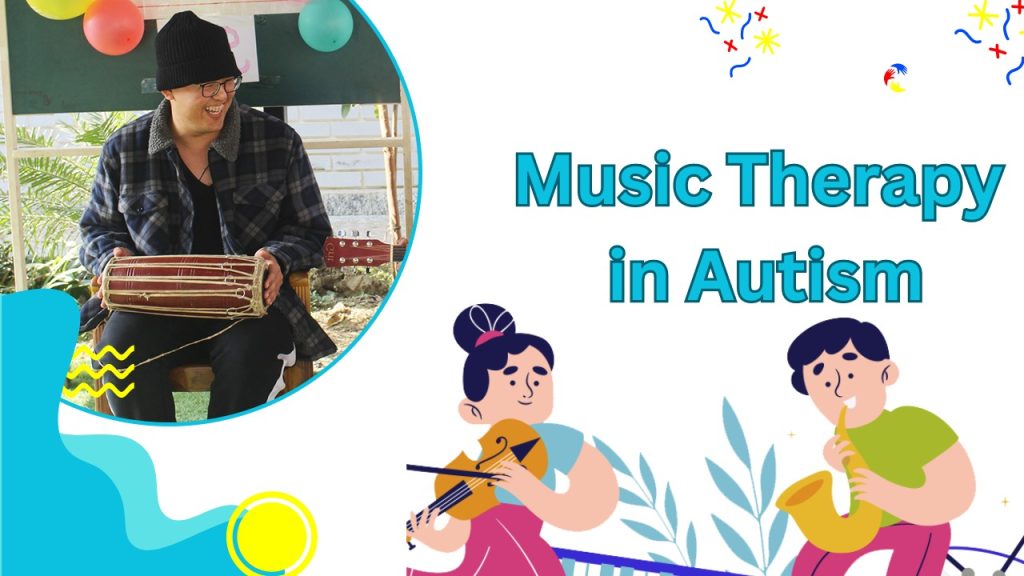As an evidence-based field of practice, music therapy combines research with creative, emotional, and unique musical experiences for treating and educating individuals. There are many health fields where music therapy is used, including autism. Music therapy involves assessing the person with autism, developing a program, and meeting regularly with them for musical activities.
As part of the session, the therapist usually plays music while the person with autism picks an instrument to join in. Instead of trying to “fix” any behavior, the therapist works with individuals at their level, bringing out their inherent talents and expressions.
How did music therapy come about?
In the early to mid-1900s, music therapy was used in the United States for children with special needs. A greater number of people in the United Kingdom began using it in the 1950s and 1960s. As a way to enhance the social interaction and communication of children with autism, music therapy was developed.
How does music therapy work?
The use of music therapy can be an effective method of communication and interaction for those who have trouble communicating. In addition to using music to communicate, people can also sing, play instruments, improvise, write songs, and listen to music. Taking turns, sharing attention, and making eye contact are all social skills that are promoted by these activities.
It is also possible for therapists to teach new skills using musical activities. In order to accomplish this, new skills are paired with their own musical cues. The cues no longer need to be given to children once they have mastered the skills. Gradually, the cues are phased out so that the skills occur on their own.
It is also possible for a music therapist to write lyrics about specific behaviors for children with autism, such as turning. A child’s favorite song is sung by the therapist to the melody of the lyrics. Rather than listening to spoken information, the child may be able to concentrate better on sung information.
What steps does music therapy involve?
The stages of music therapy are typically as follows:
- Assessment: Therapists determine a child’s needs by assessing them. GPs or other therapists may also be consulted as part of music therapy, as this is often used along with other autism therapies.
- Goal-setting: Each child’s needs are taken into account when developing a program.
- Activities: In each session, the child is involved in activities that are suitable for his or her needs. Among these activities are songwriting, dancing, singing, playing instruments, listening to music, improvising and working in groups.
- Evaluation: Programs are regularly evaluated to ensure they are working effectively.
One-on-one or group music therapy sessions are available. A typical session lasts 20-50 minutes and takes place once a week. Children’s needs determine how long the therapy will last.
What are the benefits of music therapy for autism?
A lot of autistic people benefit from playing music with others, especially those with nonverbal autism. Among the benefits of music therapy are:
- Personal expression
- Managing stress
- Connections with others
- Coordination of physical activity
- Focus
- Taking turns and sharing.
How to use music with autism?
Practical Tips for Using Music with Individuals with Autism:
- Individualized Approach: Recognize that each individual with autism is unique, and tailor music interventions to their interests, preferences, and sensory needs.
- Consistency and Routine: Establishing a regular schedule of music therapy sessions can provide predictability and structure, which can be comforting for individuals with autism.
- Incorporate Visual Supports: Use visual aids such as picture schedules, song lyrics, or visual timers to support understanding and participation during music activities.
- Encourage Exploration: Provide opportunities for individuals with autism to explore different types of music, instruments, and musical styles to discover what resonates with them.
How is ACNS contributing to music therapy?
AutismCare Nepal Society (ACNS) provides Music Therapy Service for the Children with Autism (CWAs) who were enrolled in Aarambha Pre-Primary School (APPS) as well as Adults with Autism (AWAs) enrolled in Aakaar Vocational Unit (AVU) of ACNS. Music Therapy is the clinical and evidence-based use of musical intervention to accomplish individualized goals within a therapeutic relationship by a credential professional who has completed an approved Music Therapy Program. At ACNS, a music therapy room is arranged with a variety of musical instruments such as Ocean Drum, Guitar, Piano, a range of Percussion instruments, etc. that are easily accessible.
The child and therapist improvise together, creating music and interacting with each other with therapeutic processes. It also provides an alternate method of communication and expands opportunities for interaction on a daily basis. Instrument playing in music therapy sessions encourages the development of gross and fine motor skills as well as hand-eye coordination. Music and movement activities include following simple directions in songs such as clapping hands and stomping feet which also contribute to the development of motor skills..
